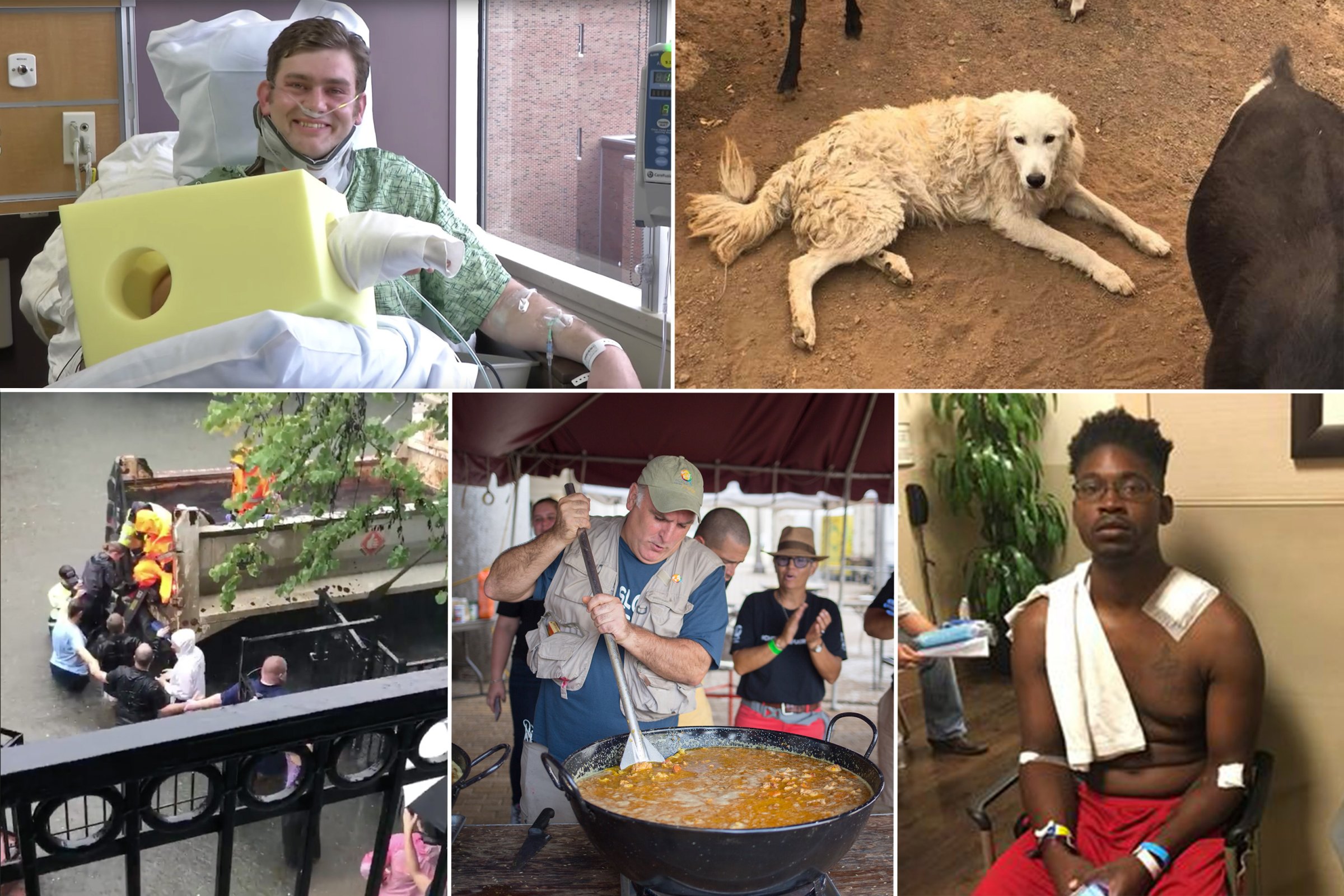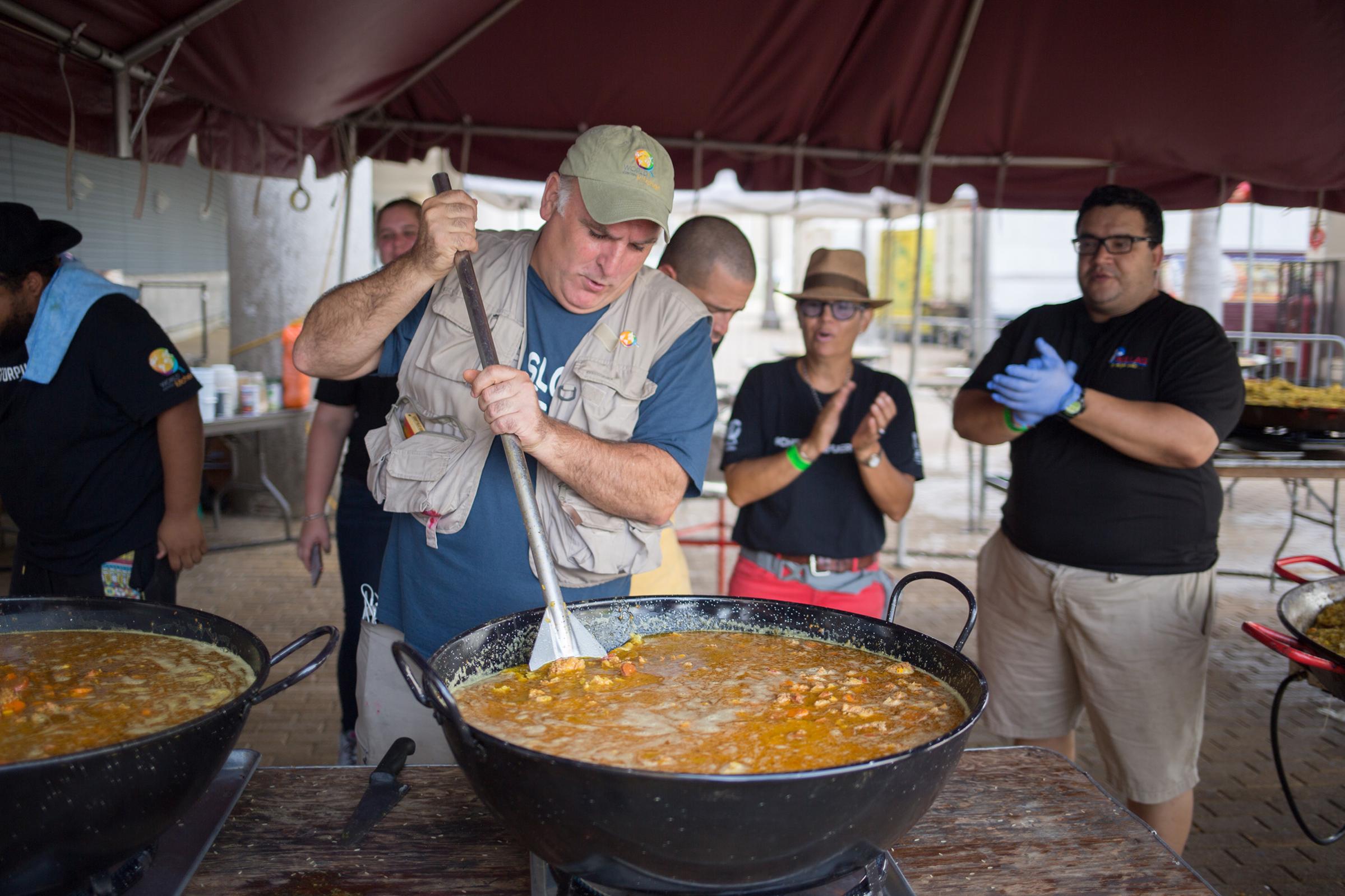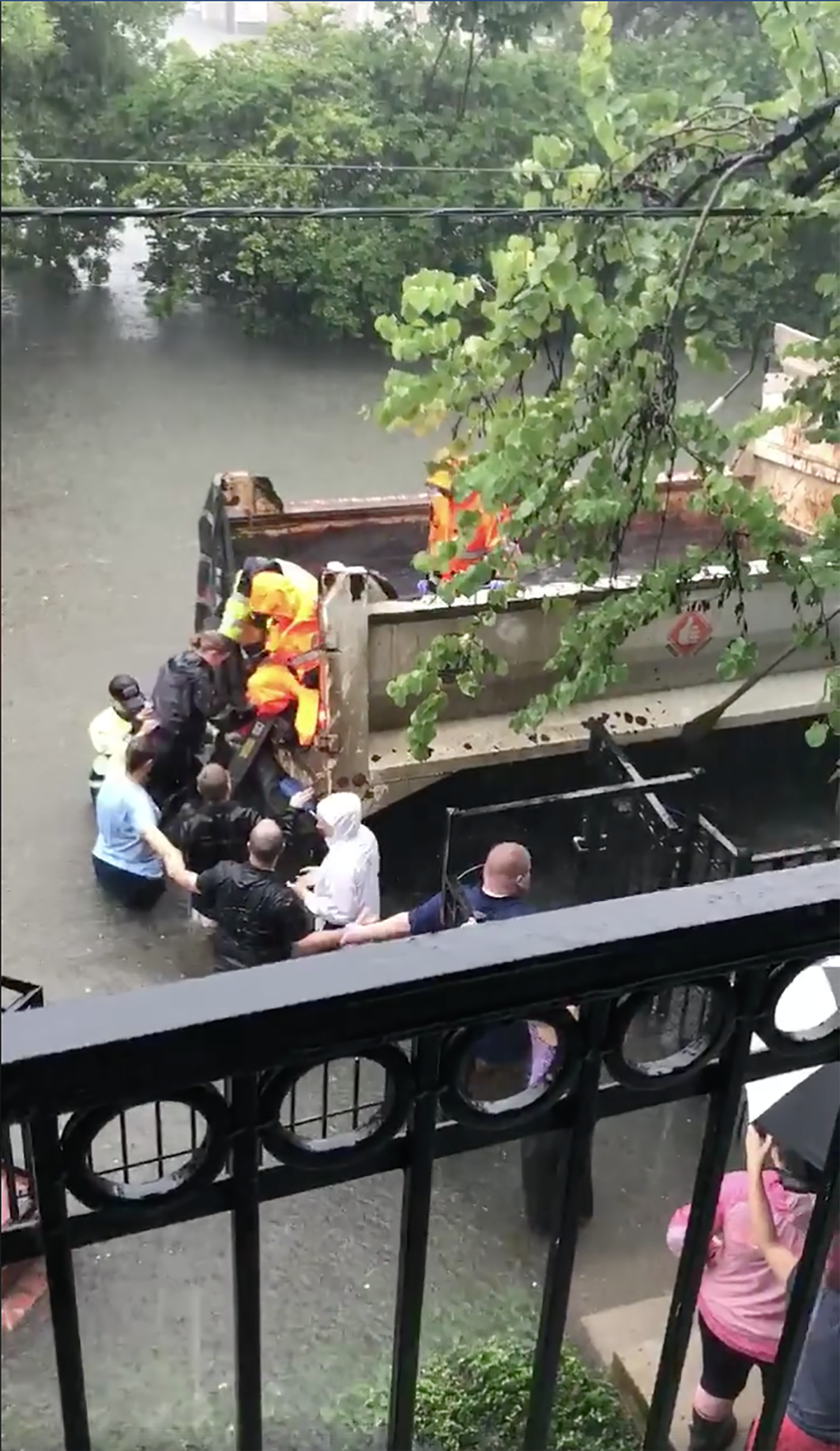
The deadliest mass shooting in modern U.S. history. Hurricanes that devastated America’s coastline. Wildfires that tore through homes and vineyards. Hundreds lost their lives, and thousands more were injured or had their homes destroyed, in the shootings and natural disasters that hit the U.S. in 2017. But amid the chaos, a handful of heroes (and one steadfast dog) rose out of tragedy, spreading light in dark moments with their bravery and selflessness.
Here are five of their stories:
The chef who fed Puerto Rico after Maria

After watching Hurricane Maria ravage Puerto Rico in September, killing dozens and leaving much of the island without electricity, chef José Andrés started cooking and has barely stopped. He quickly mobilized a team that has offered far more fresh, hot meals than have government organizations and agencies like the Red Cross.
Through his nonprofit, World Central Kitchen, which aims to empower communities through food, Andrés has served more than 2.8 million meals via a network of kitchens across the island. Andrés hopes to show that chefs can be just as essential as medics when disaster strikes. “You bring doctors for health care in disasters,” he says. “When you have to feed people and be creative about it, you will bring in cooks.”
World Central Kitchen’s operations began to wind down in October as more local grocery stores reopened, but Andrés, based in D.C., returned to Puerto Rico in November with plans to continue serving food through Christmas. “We still have a crisis in the heart of America,” he says. He anticipates a total of more than 3.2 million meals will have been served by year’s end.
The dad who saved lives amid Las Vegas massacre

When bullets rang out at the Route 91 Harvest country-music festival in Las Vegas on Oct. 1, Jonathan Smith could have fled. Instead, the 30-year-old father of three raced back toward danger to help about 20 strangers—many of whom were too frozen in fear to move. He picked up a woman off the ground and carried her to safety. He lifted another who had fallen, and he roused many to start running. “I just did what anybody would do,” says Smith, who services copiers for a living. “No one deserves to be in that situation and be left like that.”
Fifty-eight people were killed in the deadliest mass shooting in modern U.S. history, and more than 500 were wounded—including Smith, who was shot while helping two young girls who were hiding behind a mini SUV. (The bullet is still lodged in the lower left side of his neck.) But because many people, like Smith, sacrificed their own safety to help others escape the line of fire, countless lives were also saved.
After the massacre, one of the people whom Smith had helped recognized him on TV and emailed to thank him. “I was the lady you saw fall in front [of] you on the sidewalk outside of the concert,” wrote Brenda Sillito. “I don’t have the right words to tell you how amazing you are for all you did that night and helping so many people, but you are.”
Sillito, 60, of Canada, says many people ran past her as she was lying on the sidewalk within range of gunfire. Smith was the only one to stop. “It took me at least a week after I tracked him down to write the email because I wanted to use the right words,” she says. “I wanted him to really understand how important he was to me that night. I feel, honestly, that he saved my life.”
The neighbors who formed a human chain during Harvey

As Hurricane Harvey pounded Houston on Aug. 27, Annie Smith went into labor at home. Her husband Greg Smith, an anesthesiologist, was preparing to deliver the baby himself after he was unable to get through to 911, when neighbors and a group of firefighters arrived to help. Fearing the mother-to-be could get swept away in the rising water, neighbor Tara Gower, an off-duty EMT, ordered everyone to form a human chain. They locked arms, enabling Annie to cling to them as she made her way to a waiting truck. “Your own safety you don’t think about until later,” Gower says. The couple’s daughter Adrielle was born early the next morning. Her parents say her birth reminded them of people’s inherent goodness. “When something bad happened, people’s true character unfolded,” says Greg, “and it was exceptional.”
The bargoer who stepped into the line of fire

Ian Grillot was watching a basketball game at a Kansas bar on Feb. 22 when a gunman walked up to a pair of Indian men, reportedly told them to “get out of my country” and opened fire. Grillot initially ducked for cover along with the rest of the people at the crowded bar—but in an instant, he decided to try to subdue the shooter. “I wouldn’t have been able to live with myself if I didn’t do anything,” says Grillot, now 25. He jumped up and rushed the gunman from behind, but before he could reach him, a bullet pierced his hand and entered his chest, where it remains.
The gunman wound up killing one of his targets, a 32-year-old engineer, and injuring the other. (He was captured several hours later.) But in the wake of the shooting, which was deemed a hate crime, Grillot was hailed for his attempt to fight bigotry; India House Houston, a community center in Texas, even raised money for him, which he used to buy his first home. Jiten Agarwal, a leader in the group, said Grillot “reminds us of the promise of America and its greatness.”
The dog that refused to leave other animals behind

While wildfires ravaged California’s wine country this fall, forcing thousands of people to flee their homes, Odin, a pet dog, stayed behind to protect his family’s eight rescue goats. The 1-year-old Great Pyrenees, a livestock guardian dog, paced back and forth in front of his charges as his owners rushed to evacuate their 35-acre forest property in Sonoma County on Oct. 8. “I looked at him, and he wasn’t going,” says Odin’s owner, Roland Hendel. “I said to him, ‘O.K., Odie, you got this then. Take care of the goats and we’ll be back to get you.’” Hendel felt “terrible guilt and sadness,” fearing he’d left his beloved puppy to burn in the wildfires that killed at least 44 people and hundreds of animals. When the 49-year-old electrical engineer returned to his property the next day, a surreal sight greeted him amid the burning trees, smoke and ash. “I could make out Odie’s tail wagging,” Hendel recalls. Odin’s fur and whiskers had been singed, but he and all the goats were left mostly unscathed. “He was so happy to see me, and he was very proud of himself,” Hendel says. Odin demonstrated courage and perseverance, according to his owner, but he also taught his human counterparts to value life over material things. “Odin risked his life to save those goats, and that’s a big part of the lesson,” Hendel says. “Life is so precious.”
With additional reporting by Mahita Gajanan
More Must-Reads from TIME
- Donald Trump Is TIME's 2024 Person of the Year
- Why We Chose Trump as Person of the Year
- Is Intermittent Fasting Good or Bad for You?
- The 100 Must-Read Books of 2024
- The 20 Best Christmas TV Episodes
- Column: If Optimism Feels Ridiculous Now, Try Hope
- The Future of Climate Action Is Trade Policy
- Merle Bombardieri Is Helping People Make the Baby Decision
Contact us at letters@time.com